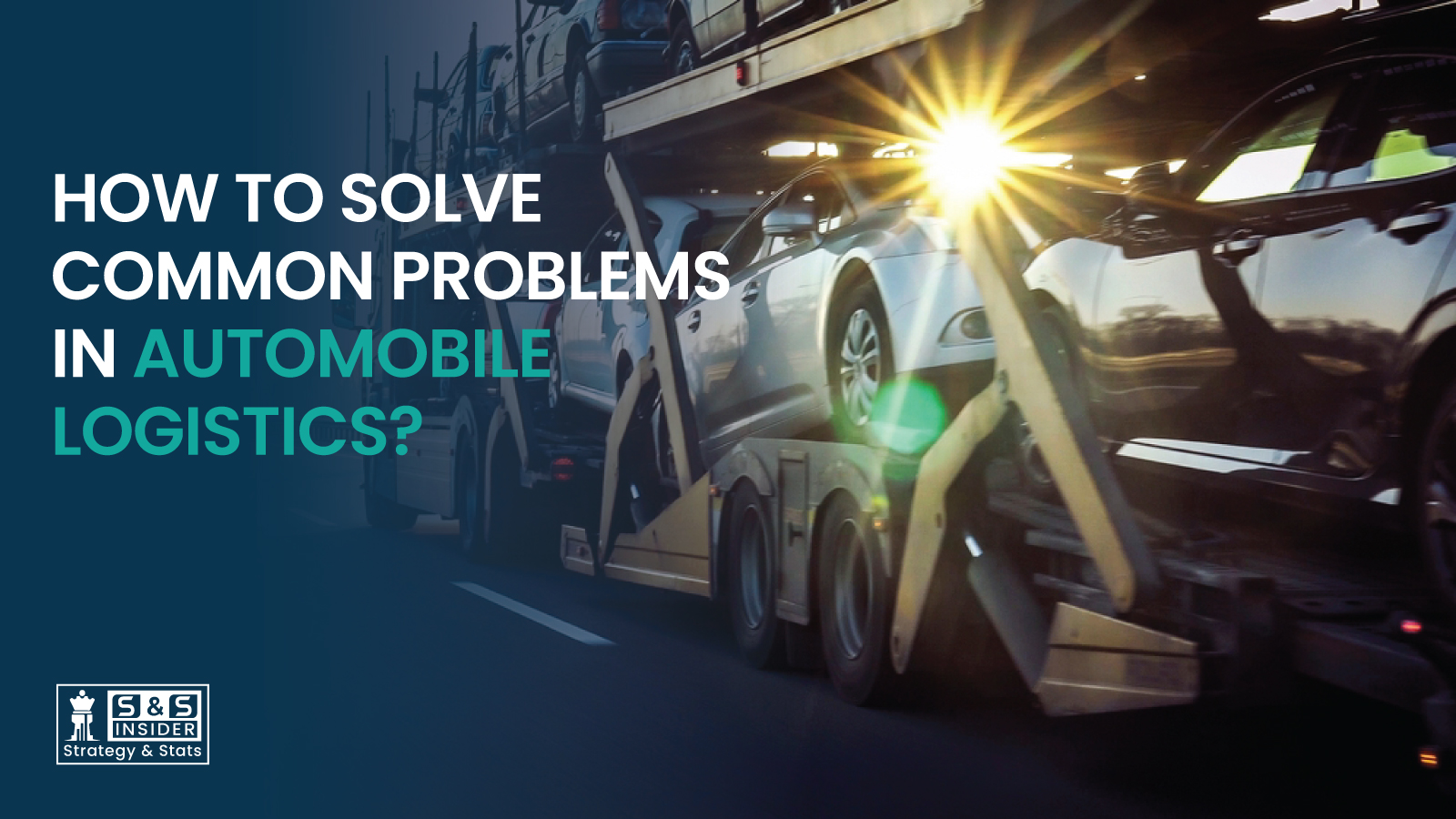
Explore 5 key strategies to overcome common automobile logistics challenges and optimize your supply chain for a market projected to hit $569.53 billion!
The automobile logistics sector has become an integral link in a chain of supply and is charged with the effective delivery of constituents, assemblies, and ultimately the finished vehicles. Furthermore, the market is expected to grow from USD 298.30 billion in 2023 to USD 569.53 billion by 2032, with a CAGR of 7.5% over the coming years. Therefore, it is warranted that companies need to learn ways to address the common issues of this sector if they intend to exploit this growth. How companies meet these challenges is particularly noteworthy.
Understanding the Challenges:
Automobile logistics faces a variety of challenges, including:
Management of logistics: With the expansion in the automotive handling and acquisition processes, coupled with the management of imports and exports, the logistics of delivering finished cars has become rather complicated. Multiple domestic and international center-based production of many parts of a particular product leads to logistical challenges and delays in the assembly of different parts together.
Regulatory compliance: The industry, as a highly regulated sector, is watched closely regarding the environment at all times. New sociodemographic factors, such as carbon-emission-related policies, force manufacturers as well as logistics players to change their fleets, which is not often easy to implement, and a good amount of time may be required.
Rapidly Changing Market Dynamics: The market has not only experienced the emergence of electric vehicles (EVs) surging but also an increasing and growing demand for logistics services. The handling and storage of electric vehicles are quite different, as electric vehicle batteries are heavier and toxic in nature, which means there is an impact on the distribution and storage processes.
Increasing E-commerce Demand: Efficiency in logistics operations is also affected by the increasing levels of online sales for car spare parts that demand the dispatching of products in the shortest time possible. This demand, however, calls for an efficient logistics infrastructure that, in this case, has to be sophisticated in that it must be able to handle a variety of parts fully.
Solutions to Common Problems:
1. Embrace Automation and Technology
Embrace Automation and Technology: Markets change swiftly, and thus the importance of automation technologies in this aspect cannot be underestimated. Construction and agricultural warehousing and distribution systems, with the help of automation, can significantly reduce staffing levels while improving inventory management accuracy. For example, RXO 3PL is incorporating AI technology in scanning arriving trucks at the warehouse, eliminating lost time during loading once the goods have arrived."
Real-time tracking tools allow a variety of stakeholders to see the status of the shipment at all times and manage processes such as delivery route and schedule planning for optimization. It’s especially desirable for reducing delays, as they have a knock-on effect on the whole logistics process.
2. Invest in Green Logistics
As the automotive sector embraces the idea of being environmentally conscious, it is now a must to invest in green logistics strategies. This transition can include changing over to electric trucks for transportation and using green power in the warehouse. Such integration of logistics activities and sustainable alternatives will not only ensure compliance with policies but also satisfy consumers’ appetite for change.
A focus on green logistics will also ensure that firms embrace sustainable partners seeking to improve brand image and enhance customer loyalty.
3. Optimize Supply Chain Collaboration
To tackle the needs of global supply chains, collaboration between manufacturers, logistics providers, and suppliers is crucial. Good communication systems can lead to an efficient flow of information and improve the management of the supply chain.
Additionally, automotive manufacturers should consider partnering with specialized 3PL providers to leverage their expertise in managing the logistics of EV components and spare parts. These partnerships can streamline operations and ensure compliance with specific handling requirements for new technologies.
4. Develop Agile Distribution Networks
As consumer expectations evolve, particularly in the realm of e-commerce, developing agile distribution networks becomes paramount. Companies must invest in technologies that enable rapid dispatch and accurate order fulfillment for a diverse range of spare parts.
Implementing advanced logistics solutions that support efficient warehousing and last-mile delivery will be crucial in meeting the growing demand for speedy service. This may include expanding fulfillment centers closer to key markets, thus reducing shipping times and improving customer satisfaction.
5. Embrace Data-Driven Decision-Making
Utilizing data analytics can provide valuable insights into logistics operations, enabling companies to identify inefficiencies and optimize their processes. By analyzing data from real-time tracking systems, companies can pinpoint bottlenecks and implement targeted improvements.
Additionally, predictive analytics can forecast demand trends, allowing logistics providers to allocate resources more effectively and ensure they are prepared for fluctuations in the market.
Conclusion:
The automobile logistics sector is poised for significant growth as it adapts to the increasing complexities of the industry. By embracing automation, investing in green logistics, optimizing supply chain collaboration, developing agile distribution networks, and leveraging data-driven decision-making, companies can overcome common challenges and position themselves for success in this dynamic market.